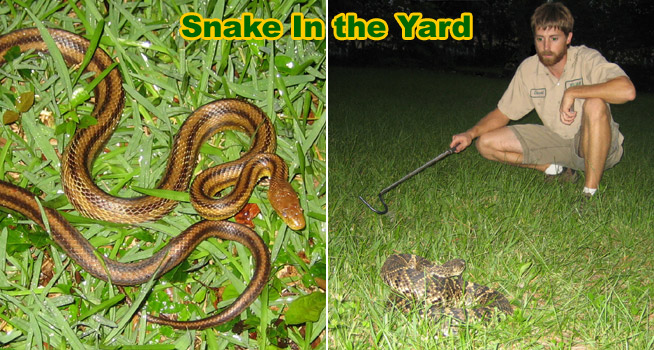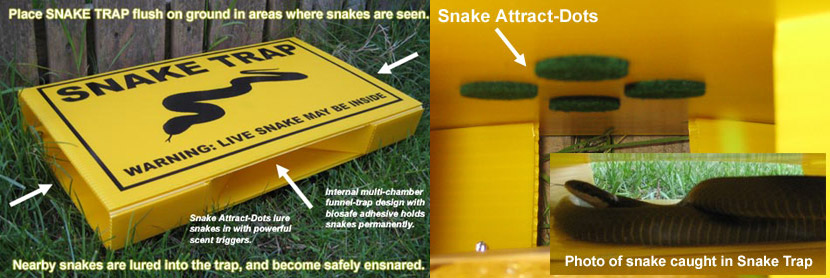
It’s true: You can keep snakes out of your yard by installing a solid perimeter fence that is a few feet high, goes a foot underground, and slopes outward at a thirty degree angle. If you have a large yard, this project is going to get expensive—and fast! Instead of calling in the National Guard to help you fortify your home, there are a few other tricks you can try. Snakes, like any animal, are driven by the need to eat, find adequate shelter, and breed. Knowing these three things will help you snake-proof your yard as much as possible.
This will keep them out of your yard: how to build and install different types of Snake Fencing
Types of pets or animals that keep snakes away Snake Guard Animals
An analysis of the effectiveness of various Snake Repellents
Because snakes need to eat, they are most likely to make their homes near an abundant food source. Depending on the type of snake you have, this food source is usually of the small rodent variety. If you have a problem with mice or rats, you have the potential to create a problem with snakes. Make your home as unappealing to the mice as possible. Close up open trash bins, clean up debris piles in the yard, keep your grass mowed, and seal up any holes in the exterior of your home. Eliminating the food source will decrease the likelihood of a serpent settling in. Similarly, chipmunks and squirrels can be potential food for snakes, so bird feeders may want to be eliminated as well, at least until you get the problem under control. Some snakes will climb trees and eat bird eggs—another reason to consider removing your bird feeders for a short while.
Shelter is another necessity for snakes. As reptiles, these animals are coldblooded, and a heat source can be an additional factor in how they select their locations. If you have a decorative stone garden or patio, the stones will warm up nicely under the summer sun, providing an ideal location for a cold snake to bask after hours. Stone formations often have cracks that serve as entry points for snake holes. Do a thorough walk-around of your home and garden. Any spots with the potential for a snake hole should be sealed up. Low brush or thick vegetation should be cleared. Loose mulch should be replaced with decorative gravel. When people think of snakes, they often don’t think of snakes climbing into the home or into an attic or crawlspace. Snakes can climb, and many do if they feel they might have a warm nest waiting for them. Closing up the holes around your home—upstairs and downstairs—is not only good rodent control, it is good snake control, too. With your home sealed up and the rodents at your neighbors, the snake has neither food nor adequate living quarters. Read more about What attracts snakes.
You can read this page for more tips on how to inspect your property and how to find a snake in your yard and identify vulnerable snake areas.
Procreation is what living things do, and snakes are no exception to this rule. Many snakes give birth to live young, and because of this, a mother snake will want a safe area to leave her offspring. Infant snakes will not remain with the mother. Almost all reptiles are on their own immediately after birth, so the snakes that were just born will be out in search of their own homes and sources of food. If you have not eliminated their food source and closed up any potential dens, the baby snakes will see no reason to move on from your yard. It is very easy for the issue of one snake to turn into a multiple snake problem.
Sometimes the recruitment of a dog or cat will help keep snakes out of your yard; however, remember that your new sentry will not chase the snake away, it will probably kill and eat it. If you are dealing with poisonous snakes, or even snakes that are easily provoked into biting, employing a house pet to patrol may not be a wise idea.
If you’re lucky enough not to have a snake in your yard yet, prevention is worth a hundred cures.
You basically have three options for getting rid of your snake(s). First,
you can call a professional wildlife expert from my below directory.
This person can catch and remove the snake(s) and take other actions
necessary to solve the snake problem. Second, you can purchase a snake
trap if you wish to catch the snake yourself. Third, you can modify your
land and seal up your house to help keep snakes away and out of the
house.
Option 1 - HIRE A PROFESSIONAL
We can solve your snake problem for you. Our nationwide group of snake specialists services 95% of the US population. Click here to find your local snake removal expert in your town. Below are just some of our more popular areas:Option 2 - BUY A SNAKE TRAP
If a snake is indoors, a trap will work. I do not recommend using a glue-based trap outdoors, because it can inhumanely catch other small critters. I have reviewed and field tested several snake trap designs, and the one featured below is the most durable and effective. It is the highest quality snake trap available on the market. Read more about Snake Trap.
Read more articles about snakes:
How To Remove A Snake In A Swimming Pool
How to remove a snake in a pond
Do snakes make good pets?
Are snakes dangerous to cats, dogs, or other pets?
For more information, go to my Snake Removal - How to Get Rid of Snakes home page. You can also visit Keep Snakes Out of Your House or Yard for more info on that subject. Learn more about the snakes in these states: Venomous Snakes of North Carolina
Venomous Snakes of California
Venomous Snakes of Florida
Venomous Snakes of Texas
Venomous Snakes of Georgia
Common Snakes of Arizona
Common Snakes of California
Venomous and Common Snakes of Ohio
Venomous and Common Snakes of Pennsylvania
Venomous and Common Snakes of South Carolina
Common Snakes of Texas
Venomous and Common Snakes of Virginia
Common Snakes of Florida
Common Snakes of Georgia
Venomous and Common Snakes of Illinois
Common Snakes of North Carolina